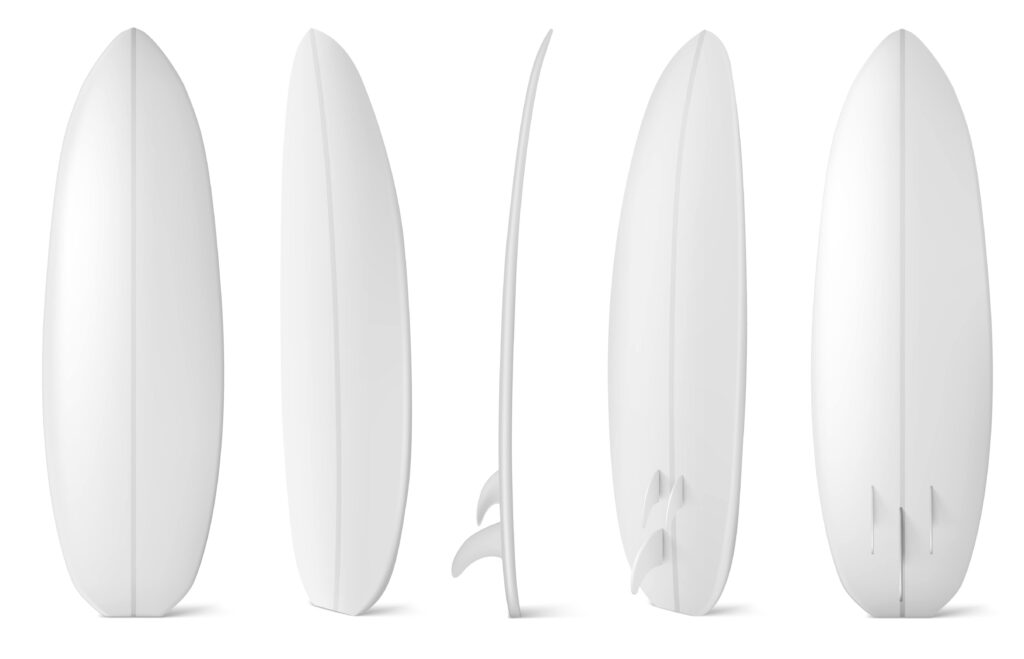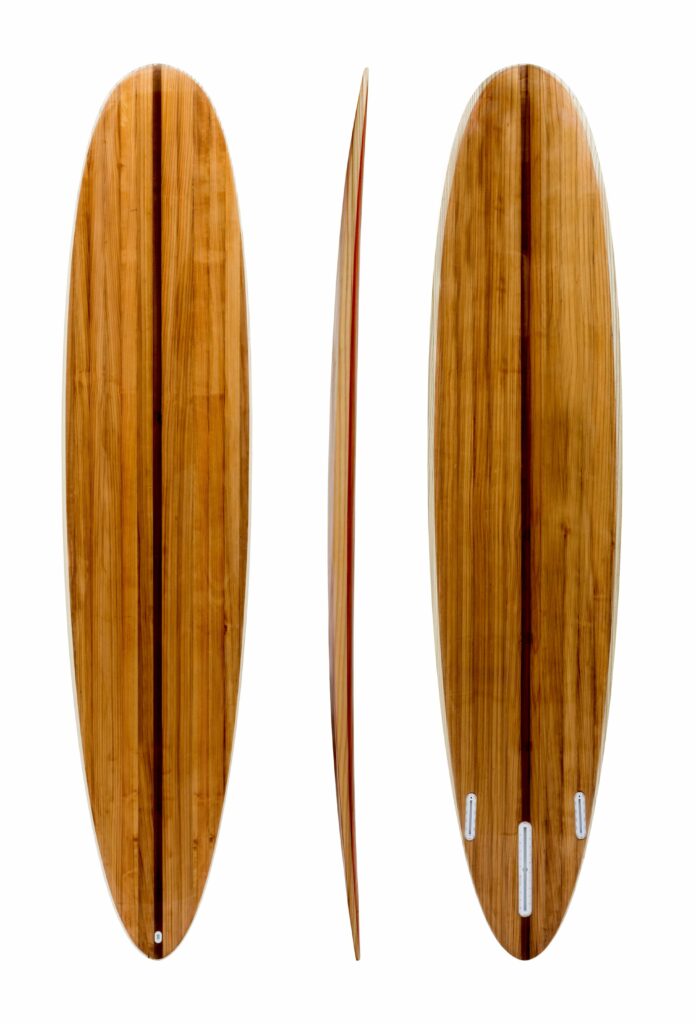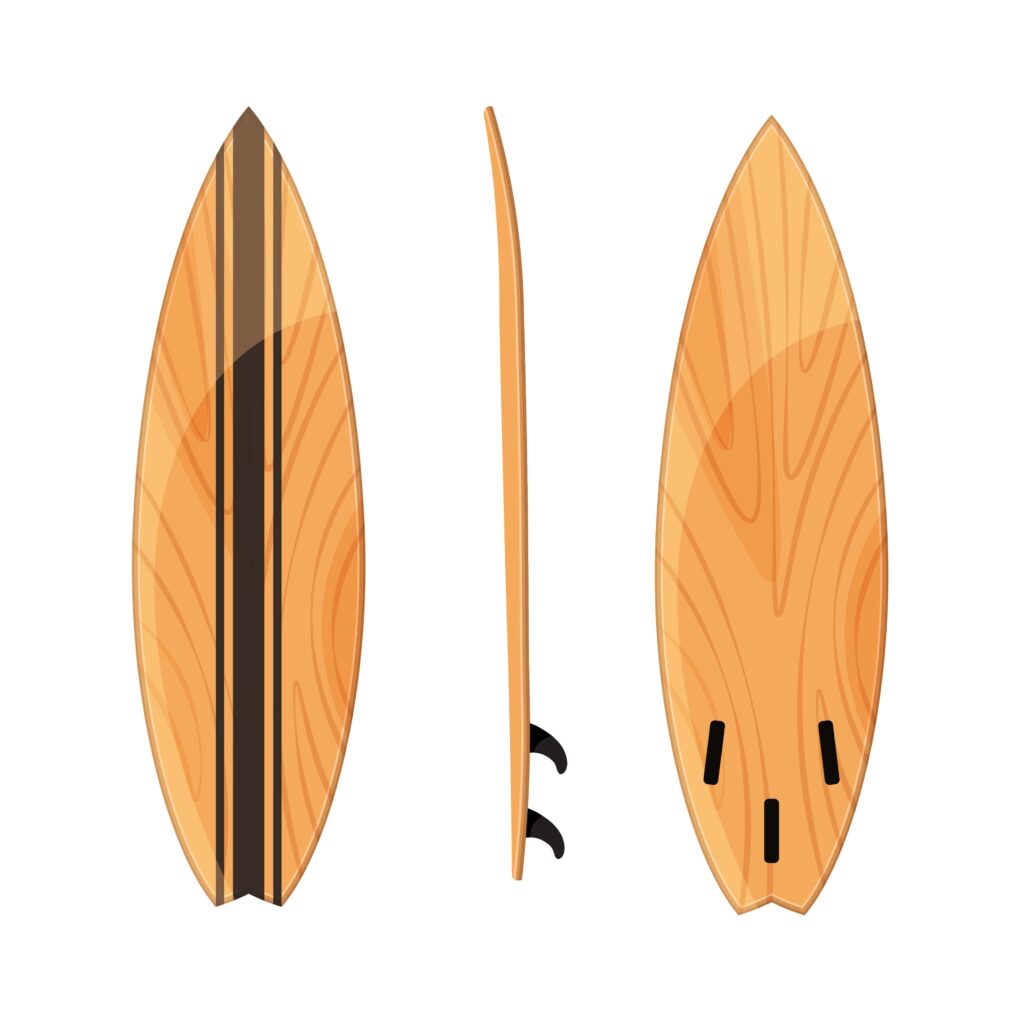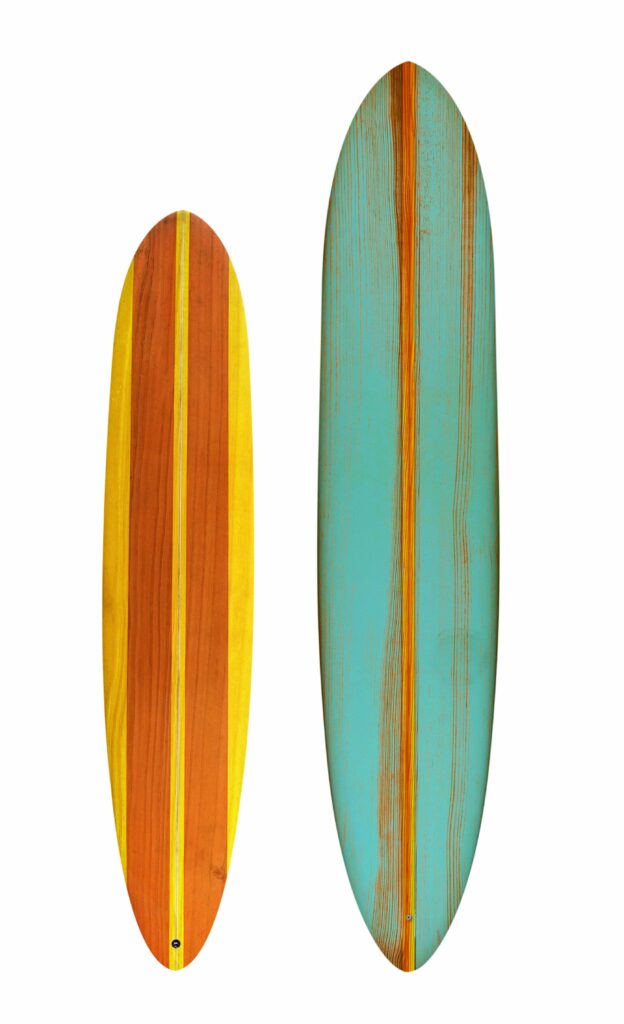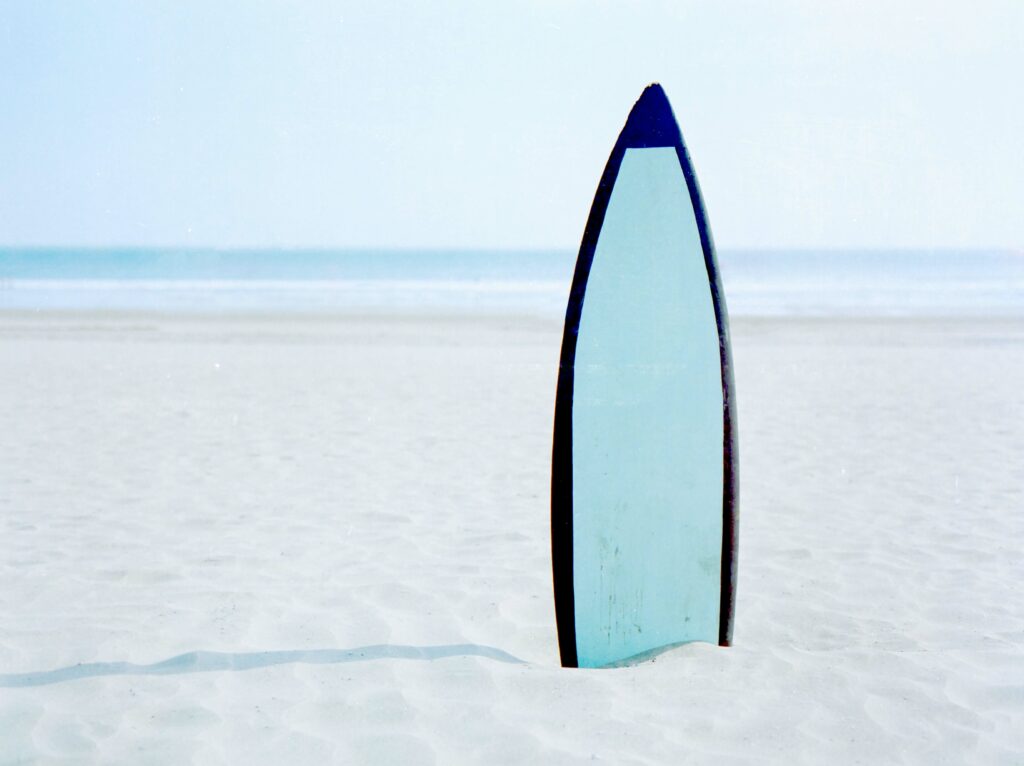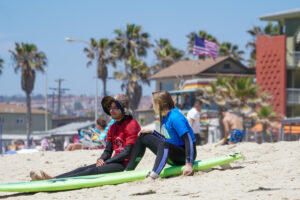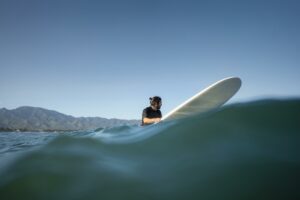What Are the Different Types of Surfboards?
If you’re considering getting into surfing, you’ll need to get a surfboard, but the first thing you’ll notice when you decide to go shopping is the number of available options on the market. Don’t worry. We’re here to guide you through the process. Here’s everything you need to know about the different types of surfboards.
Surfboard Shapes
The shape of a surfboard plays a big factor in its use and durability.
Short Boards
The shortboard is the most popular and fastest type of surfboard. Not only is it the type that’s mostly used in contests, but it is also most likely what you think of when you hear the term surfboard. It’s fast and strong, but it’s hard to paddle. They range in length from around 5’6″ to 6’4″, in width from 16″ to 19″, and have a characteristically rounded square tail.
Longboards
Longboards have rounded noses and are longer than 8 or 9 feet. It’s a great option for beginners due to its stability, how easy they are to paddle, and the fact that they’re great for small waves. Their larger size makes it more challenging for them to navigate the white water and oncoming sets required to reach “out the back.” Longboards typically feature a single, oversized fin. You can learn more about the differences between shortboards and longboards here.
Fish Boards
The fish board’s build—short length and broad width—make it an excellent choice when you need a board that’s both rapid and easy to manage, such as when riding small to medium waves at a variety of speeds. Because of the extra volume in the board, fish surfboards are simple to paddle and quick to launch off of a breaking wave.
The traditional fish board has two fins, although many newer models feature four fins. The fish surfboard has been a source of inspiration for numerous different types of boards, both in terms of its fin configuration and fishtail form.
Fun Boards
The funboard is a shorter longboard, often between 7 and 9 feet in length. Typically configured as a three-fin thruster, funboards are the ideal shape for surfing beginners.
It’s large enough and long enough to paddle out and catch waves easily, yet short enough to begin turning and advance your surfing.
Due to its widespread popularity, you can easily customize your funboard.
Gun Surfboards
As you become more experienced at surfing, you’ll likely want to chase bigger waves. You will need a big wave gun surfboard for the biggest waves, which is essentially a stretched shortboard. Gun surfboards have a huge volume and narrow profile, making it easy to rapidly paddle into large waves and speed down as soon as possible. Guns typically have either a single massive fin or a thruster arrangement for their fins.
Surfboard Materials
Surfboards can be made of both natural and synthetic materials.
Foam Boards
Foam boards are the best material for beginners. Their boards are often used by inexperienced surfers who are still getting used to the size and maneuverability of their equipment. If you fall off a wave while riding a foam or soft-top surfboard, don’t worry, it won’t hurt half as much as other board materials.
Foam boards are buoyant and easy to transport, meaning you’ll be able to travel easily with them. They’re also low maintenance and affordable.
Poly Board
After World War Two, surfers began experimenting with various materials for building boards, and polyurethane foam soon became the industry standard. Poly boards have a PU core encased in fiberglass and covered with polyester resin.
The most typical structure for hand-shaped boards is PU foam and poly resin because of their low cost and ease of shaping. A hand-shaped surfboard is superior to a factory-made one, but only if it’s well-made.
A poly board’s foam and resin are somewhat pliable, allowing for more responsiveness and maneuverability in the water. The trade-off is that they are more vulnerable to damage; without proper maintenance, your board will be full of dents that might eventually cause the fiberglass to peel off the foam. Poly boards, thankfully, are simple to fix if damaged.
Dense PU foam makes poly boards heavy enough to sail smoothly and efficiently over strong surf. Many surfers who regularly tackle huge waves choose poly boards due to their increased stability and responsiveness. They can be too much for beginners due to how heavy they are.
Wooden Boards
Wooden surfboards have been in use for thousands of years. The first surfboard was made in Hawaii using wood from trees in the area, like the koa tree.
Wooden surfboards have less of an effect on the environment than other types of boards. Constructing wooden planks doesn’t need excessive quantities of synthetic materials; therefore, less trash is produced than other materials. They’re also extremely durable and can last a lifetime if you care for them properly.
There are, however, a few drawbacks. They’re a bit more challenging to manage due to their increased weight. If you’re a more seasoned surfer who wants to do cool tricks in the air, you may want to get something else, like a fiberglass board.
Also, wooden boards are not cheap, so you should see purchasing one as an investment in your surfing career rather than as a means to enter the sport.
Epoxy Boards
An epoxy board features polystyrene or expanded polystyrene coated with fiberglass or epoxy resin. Epoxy surfboards are often lighter since these foams are much less thick than PU foam.
Novices use epoxy boards because their reduced weight makes it simpler to catch waves. Less-experienced surfers may find it difficult to ride little waves on a poly board, but experts know that epoxy surfboards are ideal for such conditions.
Epoxy boards have materials that are very rigid and long-lasting. Therefore, although they may not provide as much input as a poly board, they are far more resilient and typically require less maintenance to last for extended periods.
Epoxy surfboards may be quite cheap if they are mass-produced, but if you want one that has been fashioned by hand, you should budget an extra 20%. Epoxy surfboards have a reduced environmental impact, but the materials are more costly, harder to form, and take longer to cure than poly surfboards.
Ready to Start Surfing?
Now that you know all about the different types of surfboards and what situations they’re good for, it’s time to choose one that fits your surfing style. Here at Pacific Surf School, we offer surfing lessons for riders of all experience levels. We have everything from private, semi-private, and group surf lessons, to surf camps all year round. We also offer surf rentals if you are in need of a wetsuit or surfboard for your lessons!
Book a lesson with us today and start surfing!
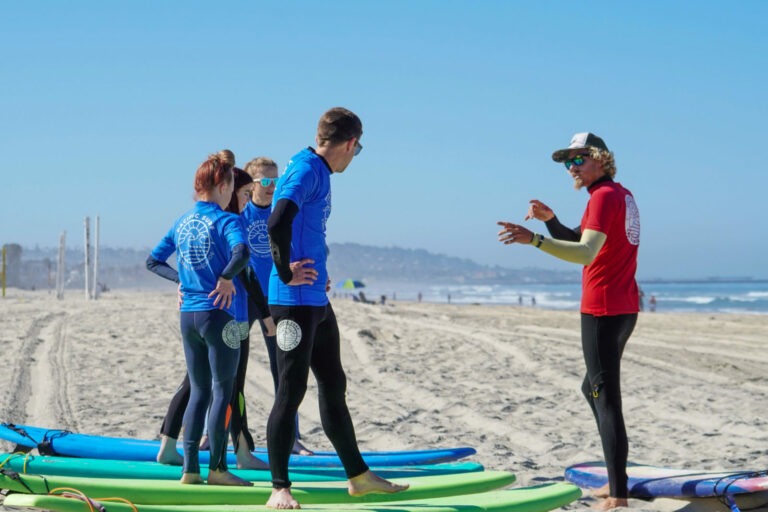
FAQs
Read on to learn the most frequently asked questions about different types of surfboards.
Shortboards are the most popular type of surfboard.
Beginners should choose a soft top funboard for the best result. Your board needs to be taller than you, and it should have a rounded nose.
Some of the major differences between surfboards are materials, length, and width.
Materials are what the surfboard is made from, and the length and width determine the stability of the board, with longer, wider boards being more stable.
Shortboards are the fastest type of surfboard.


